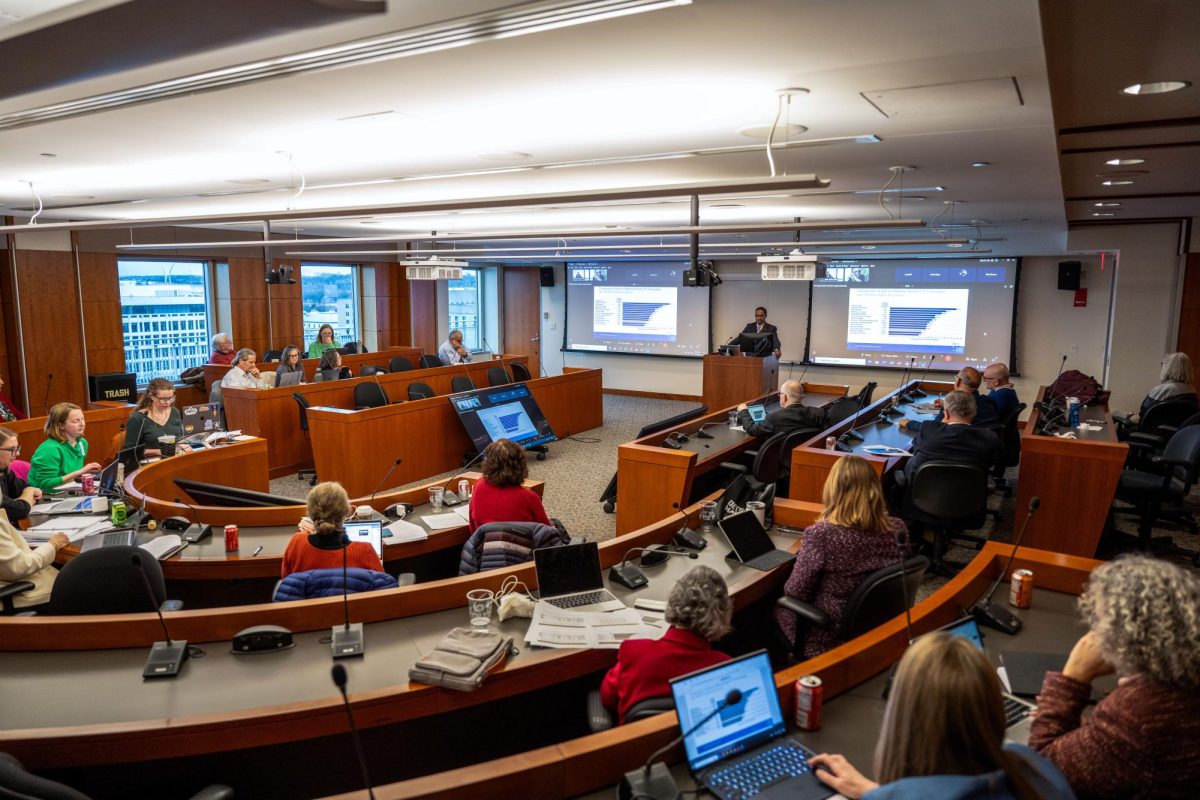Dana Tai Soon Burgess wanted his dance students to perfect their techniques this summer before the curtain opened. But now the instructor of a first-year master’s of fine arts program is focused on what happens when their computers open.
After six weeks of in-person dance rehearsals and computer instruction at GW over the summer, the seven MFA students have spent the semester tackling assignments from their homes in Israel, California and D.C. By learning how to blog, shoot video and use editing software, they’re becoming their own talent agents.
“The opportunities for communication never replace the art form and the need to have interaction. That’s why it’s hybrid. But it allows for faster communication than we’ve had before,” Burgess, the chair of the theater and dance department, said.
The online master’s of fine arts program, which caters to mid-career dance professionals looking to improve both their pirouettes and their photo-editing skills, could be a model for future online learning at GW, Vice Provost for Teaching and Learning Stephen Ehrmann said.
As online enrollment climbs nationwide, administrators are embracing the hybrid method of interspersing online research, blogs and video chats with in-person class sessions as a way to improve teaching and save money on classroom space.
The University offers 60 degree and certificate programs that use a standard distance learning model where students never have to set foot on campus. But Ehrmann, who brings experience in educational technology to his first year at GW, hopes a potential funding boost this year will foster a bigger future for hybrid programs. He said these programs help the University offer more classes despite the crunch for classroom space and the pinch of the city-imposed population cap.
“It’s a world that’s becoming more hybrid. In virtually any job that you can think of, a lot of your interaction with other people will be online,” Ehrmann said. “Some of them you’ll see face-to-face, some of them you may never see face-to-face.”
While the details of the hybrid course expansion have not yet been finalized, it will likely follow the Innovation Task Force’s goal of converting 35 courses to the hybrid model over the next five years to save an estimated $6 million on classroom rent.
In an effort to attract more professionals to distance education options, the Board of Trustees, the highest governing body at GW, allotted $2.3 million to develop mostly graduate-level online and hybrid programs in the GW School of Business and the College of Professional Studies this year. University Writing courses will continue to develop hybrids for undergraduates.
“I think students need to learn the skills of working in these environments, so you have the advantages of flexibility of hybrid programs. You don’t have to be in a particular spot at a particular time as often,” Ehrmann said.
Before the University can make strides in promoting hybrid programs, Ehrmann said administrators will have to decide whether to centralize online learning in a University-wide office. Each school within GW keeps track of its own online learning records instead of a single University-wide office in order to limit administrative costs.
“It’s pretty complicated, and a lot of people complain about that. It’s the way things have evolved,” Ehrmann said.
In a step toward streamlining the process, he said administrators are looking “to work with departments and have faculty work in teams to create new degree programs, or rethink how current degree programs are taught and make it both more accessible and better than it was.”
Faculty can also seek up to $5,000 in grant money from the Online Learning Initiative, a special program within the Office of Graduate Studies and Academic Affairs, to develop online summer courses that sometimes have a hybrid slant.
Assistant professor Elizabeth Warson taught a summer course this year in the graduate art therapy program that made use of message boards and online voice presentations before bringing students to the Pine Ridge Indian Reservation in South Dakota to practice the craft.
“Most students would say it was rigorous, but they enjoyed it,” Warson, who will expand the course next summer, said. “They were surprised how much interaction occurred.”
Last summer, Heather Pultz, a student in the MFA dance program, gathered in-person with her classmates to learn choreography. Throughout the academic year, she completes coursework online while working as chair of the dance, health and wellness department at the School Without Walls.
“We learn collectively and in a community, not in isolation. It helps us stay connected, whereas as an artist you’re often really isolated,” she said. “We’re always in dialogue and challenging each other. We’re learning to sink or swim in a supportive but competitive atmosphere. In the arts it’s incredibly rare.”
University looks to widen online learning opportunities
November 21, 2011
More to Discover






